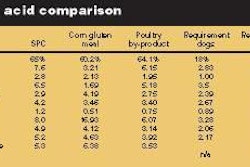Smaller niche operations must be tuned into the beat of consumer demand. Understanding your customers and the dynamics of the marketplace can help you control the direction of your business. In particular, with accurate insight into customers' attitudes and behaviors toward your products, you can better grow your business. So, let's talk about developing simple tools that can be used to facilitate growth.
Information is key
The first ingredient to successful planning is credible customer information. It is beneficial to use publications such as Petfood Industry magazine to obtain an overview of your market. In addition, you need a customer database stored in Excel or some other database format.
The information should include the customer's contact information: name, address, state, phone, E-mail and any demographic information you can get your hands on (e.g., gender, age). Also include your sales data for each customer transaction, what was purchased, the number of that specific item purchased and the date of the transaction. When the same customer purchases product every day of the weeky, you would enter this information into your database accounting for each transaction during the week.
Begin to compile this information for all the customers who have purchased from you in the past 12 months or so. From there, you will begin to build your database. Next give each customer in your database a unique identifier, so you can identify repeat purchasers. If the first customer who purchased from you, say 12 months ago, was given an identifier 100, and this customer came back to your business in the last week or so, you would enter that transaction with identifier 100.
Last, but not least, ask your customers if they would object to your reaching out to them later to ask their opinions of your products. For online purchases, provide a webpage that allows customers to opt in for this purpose. In your database, note whether you can or cannot contact each customer. This avoids any spam or no-call issues that can result from contacting customers without their prior consent.
Leveraging your database
Now we are ready to leverage your data. There are two approaches to doing this. First, you can evaluate your internal database by looking at the profile of your customer base. Ask questions such as are my customers older, are they mostly single, do they tend to buy from the state of Texas, etc. By looking at these profiles and the sales data of these profiles, you can begin to plan marketing strategies for your businesskeeping your most valuable customer segment in mind.
The second approach is to ask your customers their opinions of your product, your pricing, your new idea, the competition, a new packaging idea or a brand theme you have in mind. Typically, asking customers for their input is done in the form of a survey or a telephone conversation.
Depending on the scope and complexity of your questions, these techniques can be executed with the help of research firms at a reasonable price. Through phone and E-mail contact, you can gather critical information that can take your business to the next level.
Do this exercise every six months or so. It is best not to question your customers too often. Good luck growing your business, and Happy Holidays!
















